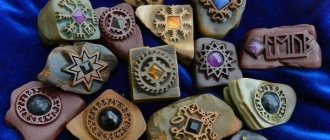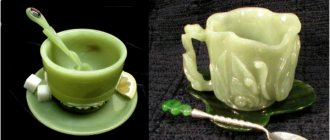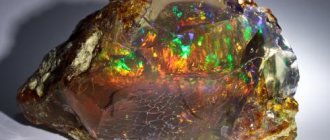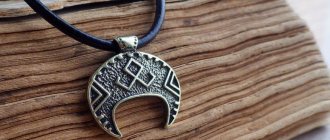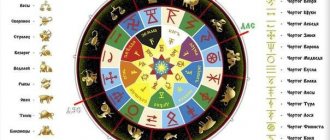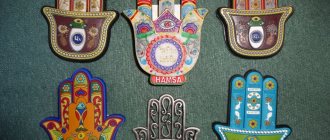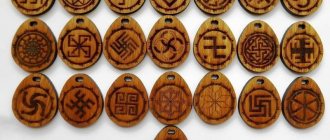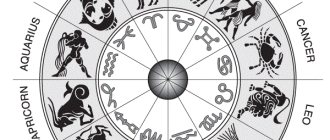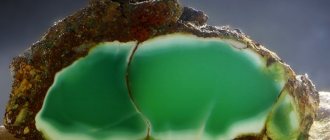The Slavic goddess Makosh (Mokosh, arbiter of fate, supreme spinner, Makosha) patronizes women's magic (witchcraft), needlework, sacred wells are in her sphere of influence. She respects hard work with perseverance, she sends Srecha (luck) to such people.
Goddess of fate - Makosh
The main patroness of fate has 2 assistants (Share with Nedolya). If Dolya is shaking the ball, a person’s life is smooth and successful, but if Nedolya gets down to business, even the simplest achievements are difficult.
Slavic goddess Makosh
The goddess Makosh is a Slavic deity who does not have a partner, because she cannot spin her own thread, tie a knot of marriage for herself. It is unknown where and how the goddess appeared - she has no relatives. This goddess lives with Dolya and Nedolya. Some consider the sisters to be daughters of the goddess. The elder deity is in charge of human and divine paths and spins them, while the younger ones wind the threads into balls. The one whose thread falls into Dolya's hands will be lucky; the one whose thread falls into Nedola's hands will be unlucky.
Symbols of the goddess Makosh were found on ancient temples; she is mentioned in the Tale of Bygone Years. With the advent of Christianity, the goddess was renamed Paraskeva Friday and continued to be worshiped.
Makosh is the patroness of fate, the eternal spinner, a mystery deity. She holds human and divine destinies in her hands. Some consider her to be related to Veles, although this is unlikely. She is always filled with calm, knows the future and the past, and is ready to give wise advice to everyone. If a person in a difficult situation is ready to fight until victory, it is Makosh who turns fate towards him. She participates in all matters, she can return man and God to the right path, but she does this only if her intervention does not harm anyone.
Makosh protects family happiness. She helps people who pay attention to the big picture, who understand that after a dark streak comes a light one, she is especially good with hardworking, merciful, gentle people who peer into the depths of things. It enhances magical abilities, helps with spindle magic, and gives good dreams to children.
Makosh - light goddess
Holidays in honor of Mokosh among the ancient Slavs
The days of celebration dedicated to the goddess include the following.
- May 9-10 (Veshnee Makoshye) – name day of the Mother of the Raw Earth. In Veshneya Makoshya you cannot plow, plant or disturb the soil with any other activities, as it has woken up from sleep after deep winter hibernation and is resting.
- Summer Makoshye or Summer Mokrids (July 19) were celebrated before Perun Day (July 20). Folk omens promise a stormy autumn if it rains on July 19, or a dry autumn if the weather on that day is sunny. It was also believed that rain on Summer Makoshya would give a rich harvest of rye the next year. On such a holiday, Mokosha was worshiped as the goddess of the water element.
- Autumn Makoshya or Autumn Mokrids (October 14 or 28) were especially celebrated. From that day on, the goddess, embodied in two faces, as the patroness of earth and water, went into sleep for the winter. They presented her with gifts and begged her to forgive her for having annoyed her in the past year. On this day they wondered, asking the Patroness of Fates what she had in store for the future.
- Makosh is the patron of autumn, and among the months, October stands out. Its main days fall on the Autumn Mokrids. In ancient times, she was honored in Makoshino Poletie (Indian summer) from September 1 to 7.
- On September 8, the goddess is revered as the eldest woman in labor on the day of family and domestic prosperity. On this holiday, all ancestors and relatives are glorified, as well as the Ancestor of the Most High Family.
- September 14 is the wedding day of Veles and Marena, the “winter” incarnation of Mokosh. From this moment on, nature fades.
- From the last Friday of October to the first Friday of November, from the 9th to the 10th Friday, Makoshina Week was celebrated. The 10th day of Friday was called “Paraskeva Friday”. The women dressed up in their best dresses with the symbols of the goddess, set the table and had a feast.
- The dark face of Mokosh, Madder, is dedicated on November 1 or 10, when winter comes and wraps nature in snow until the arrival of spring.
Myths and beliefs
Slavic myths say that the Mother Goddess, the Destiny Goddess rules the higher beings and the human world, owns the secrets of Kola Svarog, Rule. She monitors the observance of customs and the implementation of laws, and patronizes those who keep traditions. Makosh weaves threads in the upper layers of the heavenly palace, sees the past and the future and knows what a person was like before and what he will become in another life. She waits to follow the path, although she allows everyone to choose between good and evil. He who chooses the second receives divine punishment and is not reborn in human form in his next life.
Myths say that ancient Makosh is a feminine goddess with a changeable nature. Under its influence, a person is sometimes incredibly happy, and at another moment he is faced with great grief. She patronizes strong people who are ready to fight, and helps in case of obstacles. If a person undoubtedly strives for his plans, Makosh gives Sech to help - success and good luck come with her.
If a person gives up, gives up, Makosh sends troubles to his head. Bad things await a person who betrays his chosen path. Old women, harbingers of death, come to him, bringing with them sadness and guiding man’s path to the lands of Krana, darkness and emptiness.
There are legends about Mokosh in the pantheon of Vladimir - the goddess of spinning is mentioned here. Myths tell: she can enter any house where a tow is thrown. To avoid this, you should not leave work unfinished. They believed that the spindle spinning during the mistress’s sleep was an instrument of the goddess who created a person’s destiny.
Slavic myths talk about the influence of deities
Place in the pantheon
The goddess Makosh was held in high esteem by the ancient Slavs. Idols of Makosh were present in all pantheons. Near the chura there was always a well, into which the victims intended for the patroness of fate were thrown. Also, her image was present on all springs and wells.
Makosh personifies the feminine principle.
The idol was carved from a birch tree, usually aspen. The head was always decorated with a kikoy (headdress), and in Mokoshi’s hands a fertility horn, a spinning wheel or ears of corn were depicted. The idol Makosh is the only female idol located in the Slavic pantheons along with other revered gods.
The symbol of Makosh is a spindle.
According to Slavic mythology, she was considered the goddess of fate, women's handicrafts, magic and fertility. According to some myths, she had no relatives among the gods. According to other legends, she was the wife of Veles (they had 2 daughters: Dolya and Nedolya). There are legends where the great goddess is the wife of Svarog.
The lower hypostasis is Baba Yaga (guardian of the Navi world and magic).
Bloody sacrifices were not made to the mothers of the gods. When contacting the goddess, they presented items of their own handicraft (balls, spinning wheels, clothes and linens with embroidery), and silver coins.
Origin, symbolism and meaning
There are several symbols associated with Mokosh. None of them can be called the main one. More often the goddess is depicted by schematically drawing the head, arms, and a long skirt hiding her legs. If the deity's arms are raised up, it symbolizes turning to the sun, the beginning of the fertile season, and abundance. If your hands are down, the picture reflects autumn and the harvest, a worthy reward for your work.
Often they draw an ornament of 4 rhombuses, meaning:
- conscience;
- soul;
- matter;
- intangible.
An alternative interpretation is a connection with the elements.
More often, rhombuses and runes are used to design personal amulets, and the image of a goddess is used in embroidery subjects.
Traditionally, mokoshit is a woman's destiny; a talisman with the image of a goddess is recommended for the fair sex. An embroidered image protects the family, brings peace, kindness and love, and helps preserve the best in people. Sometimes amulets dedicated to the goddess are put on children to protect them from darkness and the evil eye. More often recommended to married ladies.
The Great Weaver especially patronizes married women
Can men wear the symbol?
There are many other talismans for the stronger sex, for example, various attributes of Perun, Svarog and Veles. However, in some cases the use of Mokosh is allowed.
It will help a man tune into a creative wave and give inspiration. That is why it is recommended to be worn by representatives of creative professions and people whose work requires making non-trivial decisions. These could be artists and programmers, writers and managers, musicians, actors, singers and many others.
Photo of the Makosh amulet
One of the names of the goddess is Mother Earth. It helps to grow a rich harvest and protects arable land from drought. Therefore, the Makosh amulet can be worn by men who are involved in harvesting or raising livestock.
The amulets of the Slavic goddess have powerful feminine energy, which means that men should not wear them all the time. It is better to use artifacts only in problematic situations or when performing complex tasks.
Magical properties of the amulet
The main magical qualities of the amulet:
- increases fertility;
- improves harvest;
- protects from the elements;
- helps with cooking;
- enhances divination;
- develops intuition;
- protects peace and harmony in the family;
- protects from the evil eye and damage.
If a woman, whom Makosh takes care of, embroiders, the threads do not break or get tangled in her hands.
Outfits decorated with embroidery with motifs dedicated to Mokosh were used by the Slavs everywhere. She protected from troubles, saved in unpleasant situations. Ornament protects the hearth, brings harmony, and helps people find a common language. Relationships under the influence of a magical pattern become calm and peaceful. It’s easier to raise children this way—an atmosphere of friendship and cohesion reigns at home.
The spinner helps the family
Protective symbols of Mokosh
The most common symbol of the goddess Mokosh is the rodovik, depicted as a swastika anti-salt (counterclockwise). Rotation means the continuous rebirth of the soul and strong ties between the ancestors and descendants of the family. Therefore, it gives patronage, protection from witchcraft, evil plans and slander, and strengthens the connection with one’s family. The talisman develops intuition and bewitching skills, helps to feel and see the connection of destinies.
Rodovik
Also, the Slavic symbol of the heavenly spinner is a figure consisting of one large rhombus, in which there are 4 small rhombuses, separated by crosshairs. Mokosh's amulet will bring health, prosperity and family well-being. It became especially effective when women wore dresses with its embroidered image during a holiday dedicated to the patroness.
Amulet Makosh
Diamonds, squares, triangles with their apex down give maternal protection to our ancestress. The “sign of a sown field” in the form of diamonds or rectangles with dots in the middle represents fertility. These dots are “seeds”, which are sewn on with beads when embroidering, highlighted with dots when drawing, and holes are drilled when carving on wood.
INTERESTING! Mokosh's amulets cope with obstacles in life and enhance the positive qualities of the owner.
Meaning for women and men
Traditionally, the amulet is used by women. Men use it depending on the situation if they work in agriculture or another place for which fertility is important. Mokosh's amulets will help develop such a business and achieve success.
To some extent, the Ruler of Fates is similar to Lada, so the uninitiated often confuse them. Amulets of the Spinner will help mature women, and signs of Lada will help girls.
The meaning of the Weaver ornament for a woman:
- help with offspring;
- support in personal life;
- maintaining close relationships with children;
- strengthening tender feelings;
- assistance in women's affairs;
- attracting success, money, favorable environment.
The Great Weaver's amulet helps girls find a good husband and live happily and amicably with their spouse. It helps married women in pregnancy, childbirth, and peaceful life.
Male farmers wear amulets around their necks as pendants. Divine patterns are painted on pantries and sheds where crops are stored.
Weaver's amulets are suitable for women
History of the origin of the symbol
The cult of Mokosh appeared in the 5th–8th centuries. BC e., but its origins and exact place of formation cannot be established. After the adoption of Christianity, her image did not disappear, but was transformed into Saint Paraskeva Friday.
There are several symbols of this goddess. On embroidery, a schematic drawing of a woman in a long skirt is common. Hands down were identified with autumn and help in harvesting, hands raised were a symbol of spring, which was used to attract abundance.
Mokosh's symbol is four connected small rhombuses.
The main attributes of the goddess of Fate are:
- spindle;
- peacocks;
- blooming trees;
- birds;
- linen;
- bereginii with pigeons;
- 2 moose cows.
To create amulets, they use a drawing of the head of the Mother of all living things - 4 connected small rhombuses, in the center of which there is a dot. According to Slavic beliefs, this sign personified the main components of a person: spirit, conscience, soul and body. Another version says that the figures represent 4 elements.
The Northern Slavs used Rodovik as a symbol of the goddess of fertility. The sign resembles a swastika, turned counterclockwise, with additional rays. It denotes the stages of the life cycle and changes in them. A person wearing such a talisman must remember the alternation of grief and joy.
Anyone who does not give up during a period of failure will be under the protection of the goddess of Fate.
Amulet options and manufacturing methods
To receive Mokosh’s blessing, they wear body amulets with her symbols, draw and embroider thematic ornaments. The best option is chosen based on personal feelings. A talisman is needed that evokes an internal response, a feeling of closeness and spiritual connection.
Rune
Runic symbols are carved from wood. They are usually called Beregins, maternal and earthly runes. The direct rune completely coincides in meaning with the main symbol of the goddess. Reversed is associated with an unsuccessful outcome of a business, a lean year, large investments of labor without a decent result.
Runes are easy to draw, so such amulets are available to everyone. Their creation takes a minimum of time. All you need to do is draw the pattern on a piece of paper and keep it with you. Having decided to wear the runic symbol permanently, they carve it on a wooden pendant.
Mokosh runes have protective powers
Symbol
The ornament dedicated to the Spinner is recommended for girls. There are no restrictions on wearing - you can use the symbol to decorate clothes or as a tattoo. The face of the goddess is used to decorate household items and body jewelry. For men, such a talisman is an assistant in work. In general, it is rather undesirable because it affects character.
Doll
The image of the goddess in the form of an embroidered doll is a powerful amulet for the home. To fill it with energy, the product is decorated in a traditional style and dressed in embroidered clothes. Such dolls are often created by experienced needlewomen. In former times they were called motankas. The peculiarity of talismans is the absence of a face. Mystical objects protected the house from harm, made people happy, rich and healthy.
The protective doll has the powers of the Spinner. In order for her to manifest them, symbols of the goddess are embroidered.
Makosh - Slavic goddess
Embroidery
Embroidered symbols are personal and family amulets. Paintings made by the mother of the family have special power - they protect all household members. Signs are often used to decorate clothing that protects the wearer. In order for embroidery to gain power, the rules are followed when creating it - the traditional choice of color is followed, only natural threads are used. Only women can embroider the symbols of the goddess. Patterns made by men's hands do not have any special power. It is not advisable to entrust handicrafts to young people.
The Weaver symbols are combined with cornflowers, associated with trust. You can depict a goddess with a spindle, a cornucopia, bees, cats.
Embroidered talismans protect family and home
Scheme of work
Scheme option
Embroidery option
Creation Rules
When starting work on needlework, they think through the image in detail. They choose the base, threads, pattern, and distribute the picture according to the pattern. A green base is preferred, symbolizing fertility and productivity. If there is none, take a white one and decorate the embroidery with a green frame.
Linen, cotton, silk and wool threads are suitable. Possible colors:
- yellow;
- red;
- green.
If all the embroidery is done in one color, choose red threads.
Peculiarities:
- embroider while healthy;
- choose the time when the moon is waxing;
- do not use scissors;
- are not distracted by conversations, radio, television;
- work in a good mood, clearing the mind of sorrows and fears.
If necessary, use black threads; white ones are strictly not recommended. The finished item is sprinkled with spring water.
The Great Weaver creates destinies
Images of amulets during embroidery
In folk embroidery, the goddess is depicted in the form of a female figure with her arms raised up. She can hold in her palms two birds, personifying family well-being, or on both sides of her are depicted moose cows, meaning women in labor, or two assistants, Srecha and Nesrecha. Ears of wheat are often added to the design to imply fertility.
REFERENCE! The Mokosh symbols “sign of a sown field”, rodovik and cross rhombuses are always embroidered in yellow on a green background.
Embroidery patterns and subtleties of the process
The amulet is made using the traditional method - the signs of the goddess are applied to the item of clothing.
You may be interested in: Svarog Slavic god of fire and justice: Mythology, symbols, legends about the blacksmith god
Each worker creates an embroidery pattern personally. In this case, the symbols should be chosen carefully so that they ultimately pour out the right energy.
For the Mokosh sign itself, yellow is used, and green for the background. If the base is white, the frame is made green. Yellow, green and red are the main colors. If there are flowers in the pattern, they must be embroidered in blue.
Embroidery pattern of the Goddess Makosh
Embroider with satin stitch or straight crosses only from natural materials. Things begin on the full moon calmly and without haste.
IMPORTANT! So that nothing and no one bothers you, not even music.
If you are in a bad mood or have negative thoughts in your head, you should put this off. Positive thoughts are put into the amulet, otherwise with negative energy you will create a pest.
When embroidering, it is forbidden to rip threads with scissors or tie knots.
CONSPIRACY
It has long been customary to ask the Weaver to fulfill an important wish, to grant help and assistance. Makosh will save you from trouble and change your life for the better if the person asking makes a return promise and diligently fulfills it. The Slavs believed that turning to the Spinner was a way to correct fate.
The most famous version of the appeal is a spell with three multi-colored threads. You will need black, white, red. Additional items for the ritual:
- testicle;
- fresh milk;
- plate;
- candle;
- match.
They turn to the goddess under the full moon, far from human habitation, on the shore of a reservoir. The candle is lit and placed near a plate on which the egg is rolled, saying:
“I twist and rock the egg, which carries away the bad one and hides it in its shell.”
The appeal is repeated 7 times, then they drink milk, tie 3 knots on each thread, reciting the text. When working with white thread they say:
“Makosh, don’t forget me, stay close”, “Makosh, remember me, weave happiness in my life”, “My tightly tied knot is a source of good luck.”
When working with red thread they whisper:
“My destiny is the best”, “My destiny is rich”, “My deeds are successful, and my days are filled with luck.”
Tying knots on a black thread, they say:
“The enemies will go away”, “Bad things will pass by”, “The troubles are gone, they forgot about me.”
The threads are cut off, tied in a knot and they say: “Makosh, deliver me from this fateful thread,” while cutting off the black thread. It is burned in a candle fire, and the ashes are buried in the ground, after being mixed with a broken egg.
Makosh - women's assistant
Foreign analogues of Mokosh
Makosh is often compared to such ancient goddesses as Hecate
(ancient Greek goddess of the moon, night visions and sorcery),
Freya
(Scandinavian goddess of love and beauty) [hence the English Fridy - Friday (Day of Freya and the planet Venus)],
Aphrodite
(ancient Greek goddess of beauty and love) [Roman version -
Venus
, Etruscan -
Uni
].
[I think Demeter
can also be written as an analogue.]
Makosh existed not only on the territory of ancient Rus', but also in other [Slavic] countries. For example, among the Czechs, Makosh is the goddess of rain and dampness, to whom they resorted with prayers and sacrifices during droughts.
Makosh is associated with the cult of water and rain; it is considered closely related to the veneration of the earth and protects fertility. She is often depicted as a female figure with horns and also belongs to the lunar cult. As you know, in Rus' the Moon has always been considered the “star” of women and patronized women. Thus, Makosh is the goddess of the moon, the goddess of rain and earth, the patroness of women, the patroness of handicrafts, housekeeping and the eldest of the spinners - the goddess of fate.
There is also an opinion that not only the Moon is the personification of Mokosh, but also the planet Venus
.
Venus has always been considered the patron saint of women, and therefore some researchers bring together Dennitsa
, Zorya (the goddess of Venus) and Makosh [especially since Friday is not only Mokosh’s day, but also the day of Venus].
How to clean and activate the talisman
Cleansing and activating the amulet dedicated to the spinner involves invoking the elements. Subsequence:
- wet with running water;
- dry in the sun;
- leave a scarf or a ball of thread at a water source as a gift to the goddess;
- Leave the talisman under your pillow overnight.
You can use the amulet already in the morning - it is completely tuned to the owner and filled with power.
Cleaning is carried out with spring water - washed and dried. Embroidered symbols are washed by hand.
Weaver Talisman
Attributes of the patroness of fate
Main attributes of Mokosh:
- linen;
- light cat;
- a pair of birds;
- thread, ball of thread;
- spindle, spinning wheel, yarn;
- kichka (headdress);
- a sheaf of ears.
On the holiday, flax was sacrificed to the goddess of weaving. A new ball of thread was also used as a gift.
Young girls, in order to find out the wedding day or the name of the betrothed, used a spindle, its parts or balls of thread, which were the main attributes. It was at midnight that Makosh willingly answered questions to a group of bewitching girls.
How to care for a talisman
The basic rule of care is regular cleansing of negative energy. Mystical things accumulate negative vibrations from the surrounding space, and therefore lose their power.
If it is not possible to obtain spring water, clean the energy with salt: put the amulet in a container with it overnight. The used product is disposed of.
The need for new cleaning is determined by personal feelings, intuitively.
Amulet of the Spinner
Makosh and the Loom
Previously, every peasant hut had a weaving loom. And there was always a magical power in it, allowing the master to weave a fabric at the discretion of the customer. This power was in the thread or yarn, it was the thread of thought, it was also the future fate of the customer. And how you weave this fabric from a magic thread, for yourself or for a loved one, is how you will live. Moreover, for the customer, it is necessary to listen to the person and look into his eyes, because he will carry part of the master’s soul on himself. And while such looms were in use, the people were the master of their own destiny. But times are changing, and the personal computer has become the master of our lives. We have moved to a new level of thinking, but we cannot throw the past out of our lives.
Features of the talisman for women
The meaning of the Makosh symbol lies in the power of nature itself and its creativity. It symbolizes the generation of life and beauty. The Makosh amulet is a continuation of all this. It was used in ancient times as a body symbol and a protective pattern. In the second case, it was embroidered on clothes.
First of all, such a talisman was aimed at protecting women from diseases. He helped the fair sex become a mother.
Here you can trace the whole essence of Slavic culture, in which a woman was considered an earthly likeness of a goddess. She represented the container of life. The Makosh amulet was also aimed at improving marital communication. He helped strengthen the family and make it more loving.
The Mokosh sign was often embroidered on the clothes of little girls. According to the beliefs of the Slavs, it acted as a powerful amulet for a child. Young girls also often wore such an amulet, because they believed that it would help them find their destiny. The amulet helped married women in many matters. It made childbirth easier and made mother and child healthy.
The sign was often embroidered on clothing.
Using and caring for the symbol
Before putting on the amulet, rinse it under running water. Take it in your left hand and cover it with your right. Feel the warmth and strength. Imagine as if you have already received what you ask for, feel these emotions. Vividly imagine a picture of a happy family, healthy, beautiful children, a happy spouse next to you.
From time to time, clean the amulet from negativity with spring water or salt. Place the talisman in salt and leave it overnight, and put it on in the morning. Clean the amulet every time you want to remove it or it becomes too heavy.
In addition, remember that a talisman is not just a piece of metal or wood. He is alive. Treat it with care and respect.
